This newsletter is a reader-supported publication. If you enjoy what I write and want access to exclusive weekly recipes, please consider becoming a paid subscriber. Thank you!
Tommaso suggested I called this collection of links and reads Magnets on a Fridge, as when we want to remember something, we pin it to our fridge, along with magnets bought during our holidays, Livia’s drawings from daycare, and my reliable recipe for farro pancakes. Read the first issue of Magnets on a Fridge here.
So welcome to the second issue of Magnets on a Fridge, a random collection of things worth reading/cooking.
Thank you for the shower of love we received with our latest newsletter and post on IG announcing that our cookbook, Cucina Povera, was finally on sale. And if you spot the book in a bookstore, please snap a pic for us, it will be like traveling vicariously through your photos!
The newsletter comes unusually on a Thursday, before a brief but so longed for Easter break that we need so much after all the emotions of the past week! We’ll be back with our regular schedule next Wednesday.
In the meantime, don’t forget to check the upcoming book events below.
Something to read, or listen to, something to cook
Everything I, an Italian, thought I knew about Italian food is wrong. This article published last week in The Financial Times made a federal case here in Italy. Politicians rode on the polemic, and I have strong opinions on this matter too. Just to clarify, I completely take the side of Professor Grandi, who is also the author of one of my favourite food podcasts from Italy, DOI - Denominazione di Origine Inventata, and of several interesting cookbooks on the Italian food culture. But we’ll delve into the roots, traditions, and identity matter soon, very soon, in one of the next newsletters.
I’ve been cooking a lot of very simple pasta dishes, mixing and matching seasonal vegetables and herbs. Agretti, monk’s beard, are my latest obsession. It is a vegetable with a very short seasonality, something that looks like chives and tastes like spinach, with a pleasant sour note (hence its name, agretti, as agro means sour). I’ve been using them for my spaghetti aglio, olio e peperoncino: this dish has a pristine flavour, something I love on a clear wind-swept early Spring day. You can find more recipes with agretti here.
I’m excited to welcome Spring into my kitchen, to celebrate its produce and the lightness it gives to new and old recipes, the fresh herbs finally pocking from the ground, the golden light that bathes the countryside in the late afternoon. At the market, I’m buying everything that is green, fresh and vibrant. Spring is the season of fresh ricotta, abundant eggs, and slender asparagus. Combine them in an elegant, traditional dish as crespelle for an Easter main course. Let’s make together asparagus and ricotta crepes.
I’m ready to knead two traditional Tuscan Easter classics: pan di ramerino, from Florence, and schiacciata di Pasqua, more common in my area, around Siena. Above, you can see the photo that Joann Pai took of Tommaso and me while slicing a freshly baked schiacciata from Forno in Magnifico in Siena when the team of Bake From Scratch magazine came to visit to shoot the Italian issue. In that issue, you can find four of my favourite recipes - twice-baked pistachio biscotti, a decadent farro and ricotta tart, occhi di bue cookies, and the pillowy pan di ramerino buns -, and our favourite spots in Florence and Siena that are a must visit for any baker and foodie. In the second photo, look how sticky and pillowy are the pan di ramerino I prepared for them.
Have you read or cooked or watched anything interesting lately that you want to share with us all?
shares an Easter menu from Abruzzo (paywalled).My friend
shared her recipe for Hot Cross Buns, along with an interesting historical insight.If hot cross buns are your next project, check also
's recipe on her fabulous newsletter Kitchen Projects.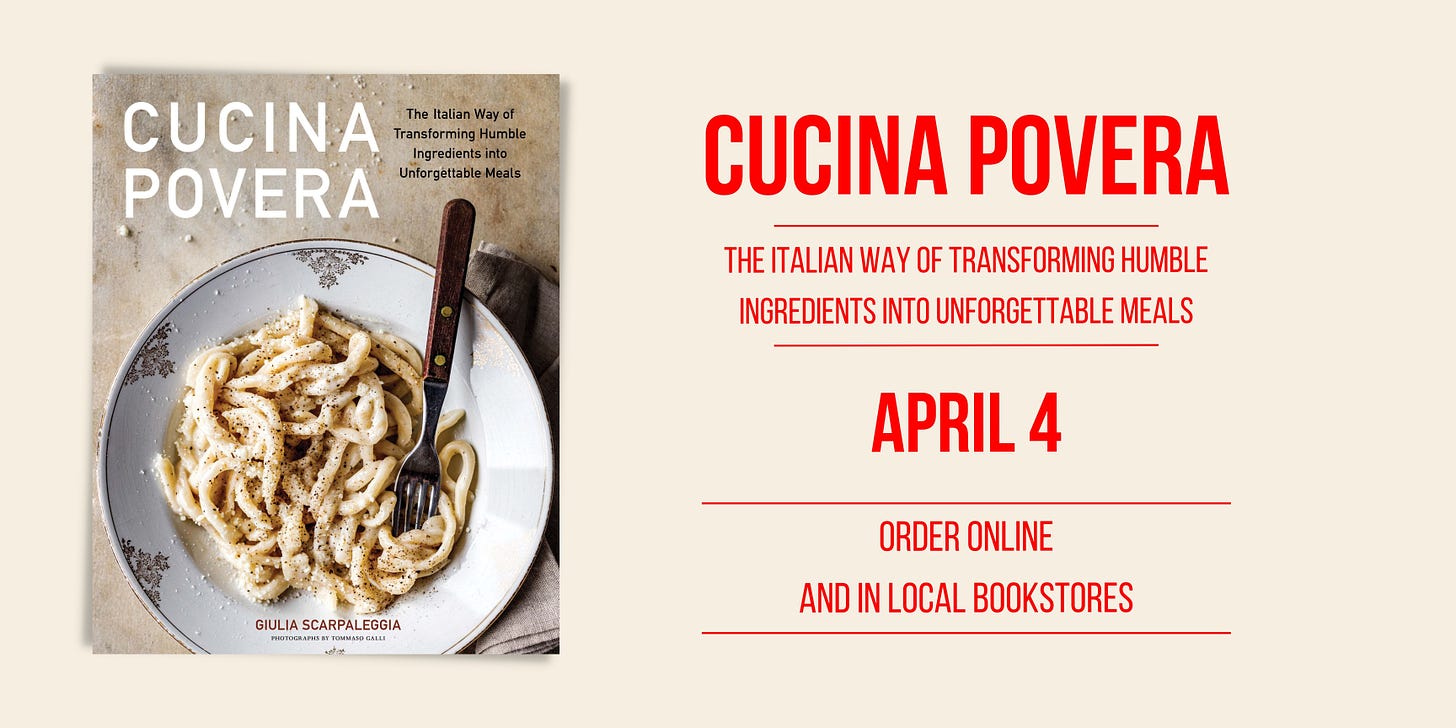
BOOK EVENTS AND TALKS
Gather your friends and foodie enthusiasts and join us for an unforgettable culinary experience. Taste the flavours, learn the techniques, and discover the soul of Cucina Povera at our book talks & events.
Thursday, April 13th - Zoom Webinar with I am Books Boston. Join us in a conversation about the use of humble ingredients, seasonal vegetables, and simple cooking techniques. Register here.
Sunday, April 16th - LIVE TALK open to everyone, a virtual book launch and party to celebrate Cucina Povera. We will meet at 9 pm CET - 3 pm EDT - 12 pm PDT. Mark your calendar and keep your eyes peeled for the link to join the event. If you have already received Cucina Povera, cook or bake your favourite recipe and join the fun online.
Friday, April 21, 2023 - CUCINA POVERA: The Art of Making Do With What You’ve Got - Online event with MoFad New York and Kitchen Arts and Letters. A conversation with Regula Ysewijn. Purchase tickets here.
Sunday, April 23, 2023 – Italy Off the Beaten Path with Giulia Scarpaleggia, hosted by Milk Street Live Online Cooking School. Purchase tickets here. Use CUCINA to have a 15% discount.
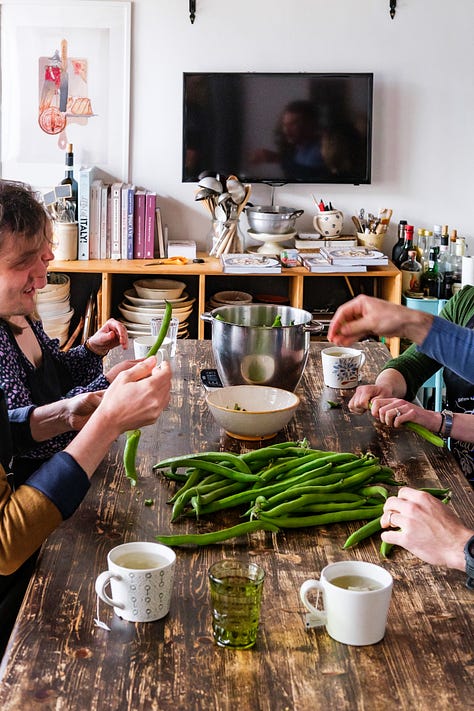
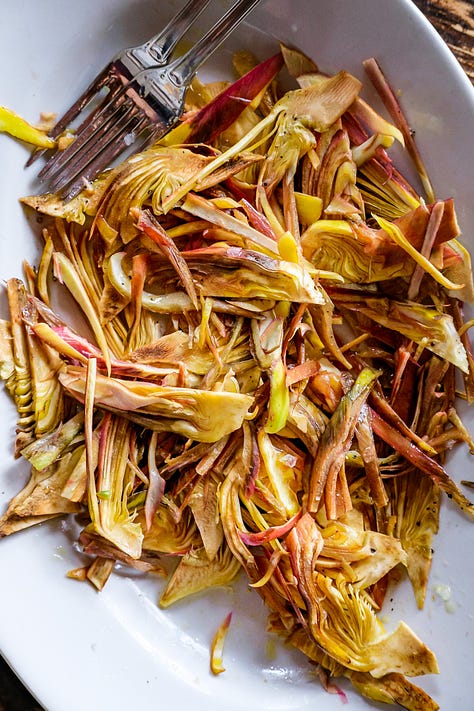
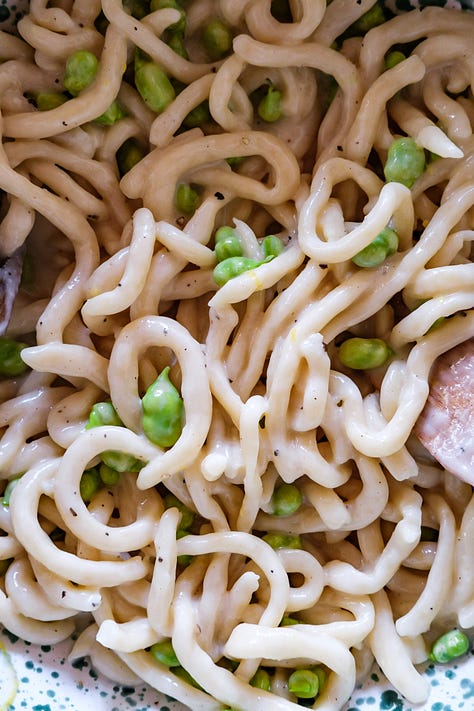

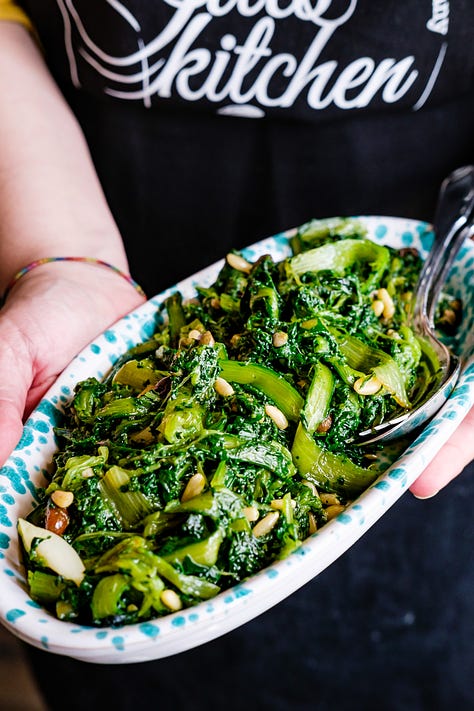

Favourite dishes during the Spring classes
When we began the new season of our market cooking classes, we were still wrapped in heavy coats and scarves, searching for comfort and warmth in the dishes we were planning to cook. Now, even though temperatures are far from being spring-like, I’m attracted by cleaner, fresher flavours: monk’s bear, fava beans, and the first fresh peas are now the protagonists of our meals, along with my beloved artichokes.
Here you can find some of the recipes we’ve been cooking in recent classes, something you could replicate for your Easter menu:
Pici cacio e pepe (yes, those that are on the cover of Cucina Povera), with a topping of double-shelled fava beans or fried artichokes.
Artichoke carpaccio: thinly sliced artichoke hearts, dressed with lemon juice and olive oil, and sometimes crowned with shaved Pecorino.
Stewed artichokes, very similar to how I cook the carciofi ritti, with plenty of herbs, but lately without guanciale.
Steamed agretti. They just need a drizzle of olive oil and a squeeze of lemon, and become the perfect side dish to fried chicken, veal involtini, and pork loin.
Not ready to completely leave behind winter vegetables, I still cook escarole and chicory with Mediterranean flavours - garlic, chilli pepper, anchovies, capers, and pine nuts - as in this recipe for pizza di scarola.
At the market I can find the freshest local sheep ricotta, so we often end up baking a ricotta crumb cake, topped with strawberries.

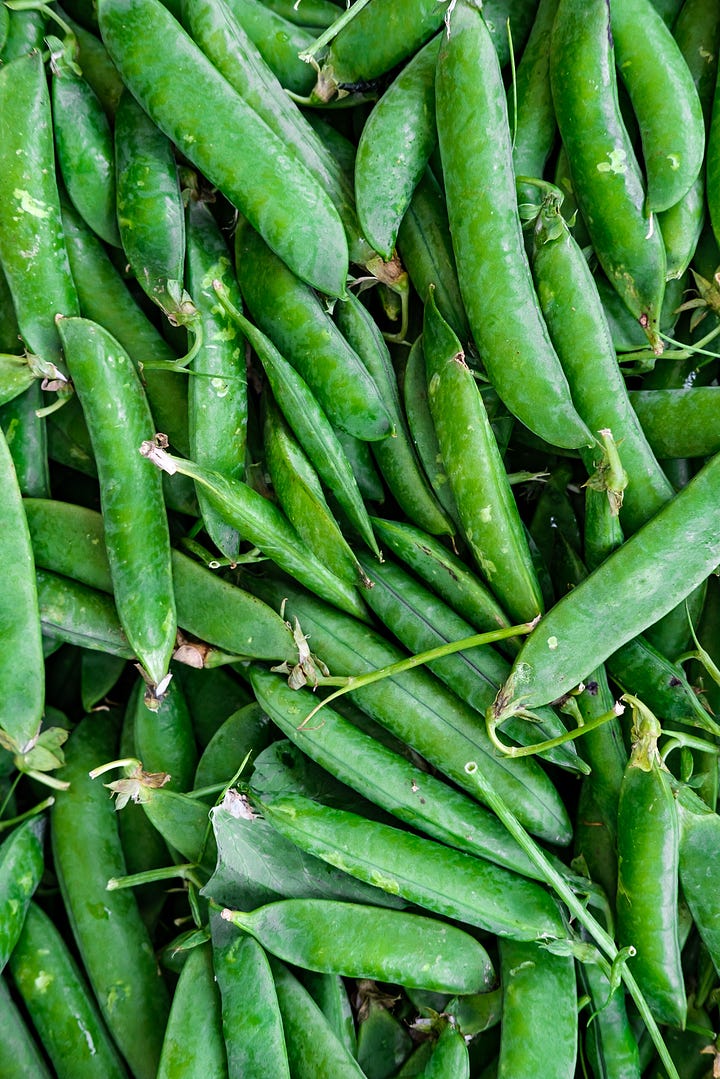
Cooking Experience in Tuscany with us
Slow down and be ready to live a day as a local: hearty homemade food is included. Every meal will be an excuse to travel through Tuscany thanks to local recipes, memories and stories. Learn more about our cooking classes here.
Next available openings:
Wednesday, April 26th - Market to Table Cooking Class - 2 spots available
Wednesday, May 17th - Market to Table Cooking Class - 2 spots available
Wednesday, June 7th - Market to Table Cooking Class - 2 spots available
Thursday, June 8th - Tuscan Cooking Class - 6 spots available






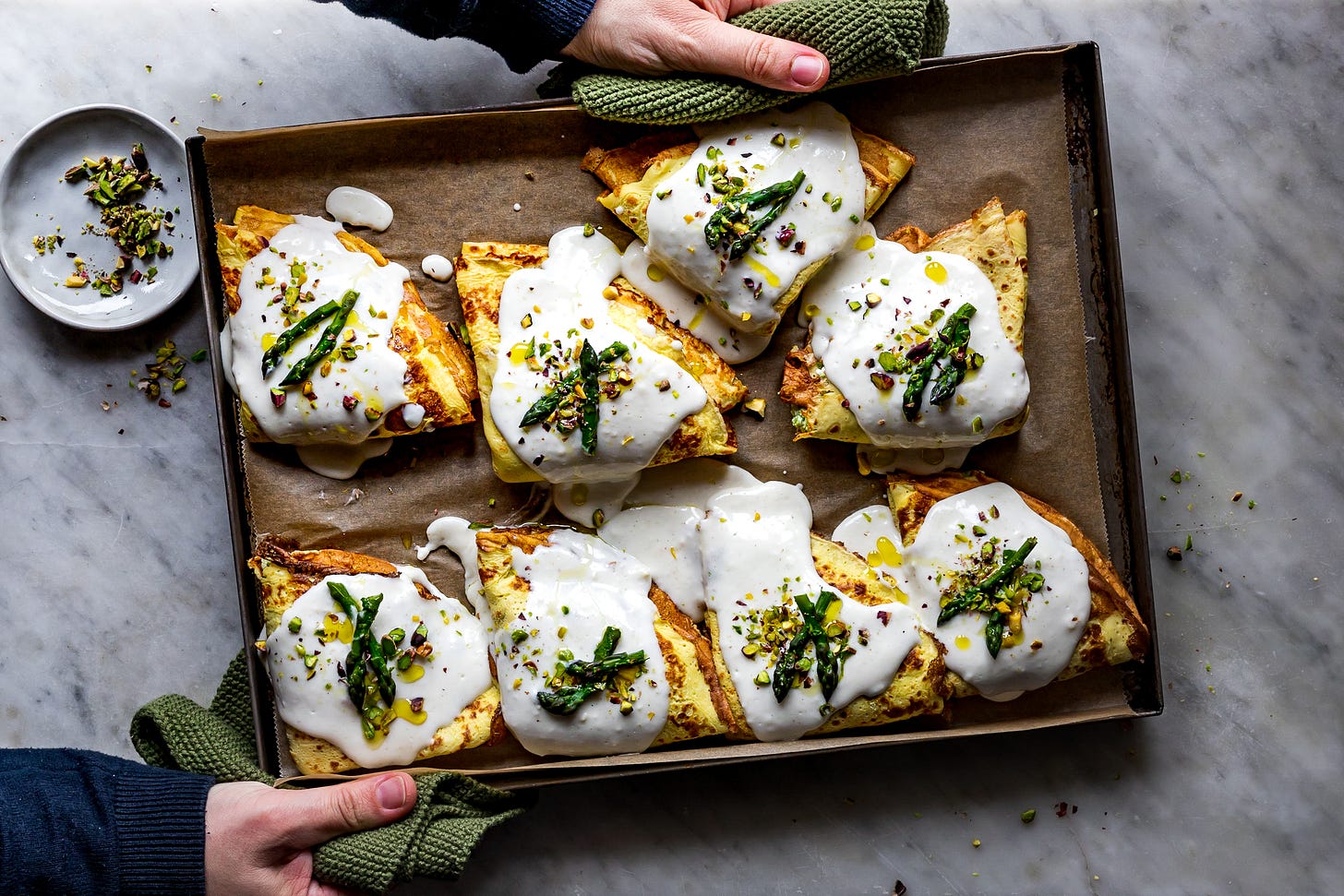




Ciao Giulia, Just wanted to let you know that I asked my local library to buy your book and they have ordered 25 copies. Just waiting for it to come in so I can enjoy it.
I just received my book ! So excited to start using it!